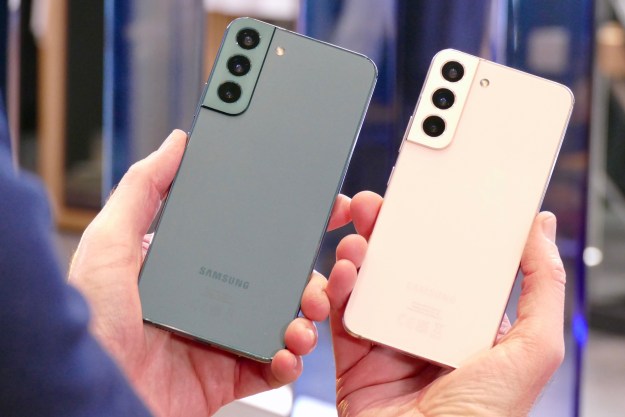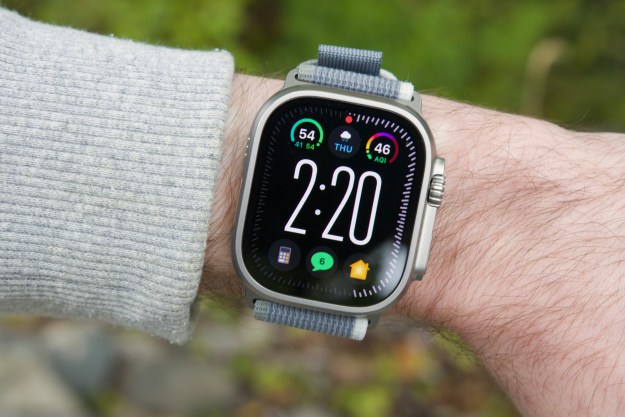The notch is not going away, it’s just going to keep popping up in different guises, whether it’s a little hole, a tear drop shape, or something else. Alternatives to the notch are also popping up — literally, in the shape of motorized cameras or like the Honor Magic 2, a slide-up body which reveals the selfie camera array, and leaves the screen untouched by the much-maligned notch.
We’ve spent some time with the Honor Magic 2 to see if the slider is the answer to the question of how to give us as much as unbroken screen real estate as possible. The Magic 2 is only available in China, and you’d have to import one if you want it, which is why we’re not giving it the full review treatment. Besides, it’s the slider that caught our interest first, so what’s it like?
Slide down screen
The positive is the screen looks fantastic. It’s a 6.4-inch AMOLED with a 2,340 x 1,080 pixel resolution. It’s a stunner with wonderful colors and deep blacks. All the usual benefits of an AMOLED panel shine through, made even better by the lack of a notch, and minimal bezels. These edges around the screen are still there, with a slightly pronounced chin being the most noticeable; but overall it’s definitely an ultra-modern, super-slick look.
To show the front cameras, and activate the face unlock, you slide the front of the phone down. It’s a motion that’s highly satisfying. It’s nicely weighted, with magnets pushing it open or pulling it closed as you get close to completing the motion. It does take a modicum of effort, and this is its downfall. If your thumb is damp, cold, or in anyway slippery, sliding down the screen with one hand is difficult. To do so you really have to grip the phone tightly, and it feels unnatural to put so much pressure on the display. A case is included which helps with the grip, but the mechanism is still slightly too stiff.
To slide down the screen you really have to grip the phone tightly, and it feels unnatural to put so much pressure on the display.
It’s a real pain when you’re trying to unlock the phone and can’t slide the screen down with one hand. However, when you can slide the screen down quickly, the 3D infra-red face unlock is also speedy. When it all works, it works well. The same can be said about the in-screen fingerprint sensor. Like all the others available at the moment, it’s temperamental. We’ve had to re-register our fingerprint several times, as it will for no reason get less reliable over time. Several software updates have arrived in our time with the phone, and each time the sensor’s accuracy has improved, so we’re hopeful it’ll continue to get better over time. But at the moment it’s still far from matching the ease of use from a traditional fingerprint sensor on the back of the phone.
Great camera
If the security aspects are our least favorite part of the Magic 2, the camera is equally as wonderful as the screen itself. The rear camera has three lenses, a 16-megapixel RGB lens, a 16-megapixel ultra-wide lens, and a 24-megapixel monochrome lens. This is a setup that’s close to the Huawei Mate 20, but we’re intrigued by the presence of the monochrome lens, which has been removed from Huawei’s latest phones. Features include a 2x zoom, a wide-angle mode, image stabilization driven by artificial intelligence, scene recognition, and plenty more.
We’ve really enjoyed using the Magic 2’s rear camera. The versatility is great, and while the finished pictures do sometimes struggle in variable or difficult lighting conditions, it’s nothing a little editing can’t cure. Wide-angle shots are crisp with minimal fish-eye effect, monochrome shots are wonderfully emotive, and nighttime shots are detailed despite the lack of a Night mode — an unusual omission given its presence on other Honor and Huawei phones, many at a lower price.
While the finished pictures do sometimes struggle in variable or difficult lighting conditions, it’s nothing a little editing can’t cure.
There are six camera lenses on the Magic 2, the three on the back joined by three on the front. A 16-megapixel main lens, and two 2-megapixel depth-sensing sensors. There are various portrait modes, with different lighting and visual effects. The bokeh look is average — it can recognize glasses and hair — but the overall effect still looks fake, and is nowhere near as effective as portrait shots with the rear camera. The beauty mode is heavy-handed too. However, we imagine selfie fans will enjoy playing around with alternative selfie apps and the high quality camera lenses.
Software and virtual assistant
We like the camera, and the Honor Magic 2 is also a lovely phone to look at and hold. It’s weighty at 206 grams, and you definitely know it’s in your pocket. Don’t let this put you off. The glass-bodied device feels expensive, well-made, and that slider mechanism is similarly high quality. The software experience is the same as you find on the Huawei Mate 20 Pro, the P20 Pro, and various other Honor phones. It’s Honor’s Magic UI 2.0, which is EMUI 9 in disguise, complete with the effective gesture control system. It’s not for everyone, as it’s quite different to Android on a Pixel 3 for example, and does need a little tweaking to get it working as you want.
At launch, much was made about Honor’s Yoyo virtual assistant as an alternative to Google Assistant. The phone is made for the Chinese market, where Google’s services aren’t available, and unsurprisingly Yoyo is tailored towards China. It only speaks Chinese, so unless you do to, you won’t get any benefit from it. It’s a shame, as from demos online, Yoyo looks rather good, with excellent conversational ability and some impressive real-time translation.
The list of things to like continues with an effective fast charge system, where the 40W Magic Charge proprietary plug and cable returns more than 85-percent capacity in just 30 minutes. We saw 50-percent charge in a little over 20 minutes too. Honor uses Huawei’s Kirin 980 processor with all its artificial intelligence prowess, there’s 8GB of RAM and 256GB of storage on the top model too. This is a true beast, and a shockingly capable, everyday smartphone.
Future design
All we want is for it to be sold where we can buy it, and at the moment, unless you live in China, the only way to get one is by importing it. That’s going to cost at least $630 based on the Chinese price for the 8GB/256GB model. It’s good value, as it neatly compares to the OnePlus 6T, but warranty concerns and the hassle of importing is a serious drawback.
Whether you decide to buy the Honor Magic 2 or not, do have a close look, as the design is potentially one we’ll see more in 2019 — Xiaomi already has a similar example with the Mi Mix 3 — as more manufacturers edge around the notch while they wait for technology to catch up with their grand designs.
Editors' Recommendations
- Honor pulls the Magic4 Pro out of its hat at MWC 2022
- Honor pulls its new MagicWatch 2 smartwatch out of a hat














